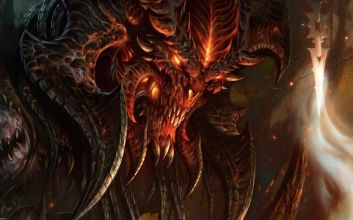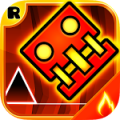Blizzard's legendary Diablo franchise graced us with Diablo II in 2000 and left a legacy of enhanced leveling and looting experiences. Back in the scene with Diablo III, the studio implemented numerous lessons learned over the years into their masterful design. A faithful rendition of its predecessor, the third installment empowers players to constantly morph their heroes, pushing the boundaries of flexibility. The vintage Diablo formula, superior skill systems, and loot-driven approach are other elements that make this sequel a captivating adventure.
The Story, the Characters, and the Tales
Some aficionados might be drawn to the narrative over anything else, and rightly so. The plot in Diablo III does, however, fall into the more predictable category of clichés. Still, its utility lies in linking an assortment of dungeons and quests in your quest for the ultimate reward – the coveted loot. Nevertheless, the addition of first-rate voice acting and stunning in-between Act cutscenes make the universe more immersive. After the first playthrough, the plot may take a backseat, but its impact is ever-present.
The Loot and Crafting System
The loot system stands tall as an engaging feature even when the plot loses grip. Vanquishing an enemy with skill-dependent actions that eviscerate them has a charm of its own. The subsequent explosion of gold and items adds to the sense of excitement. Despite many attempts, no other game quite matches Diablo III in inspiring a primal need for loot.
Diablo III optimizes another aspect of the game by reworking its economy. Unwanted magical items can now bring desirable amounts of gold when sold to vendors. Alternatively, players can shatter them down for blacksmith crafting or auction them off.
The Blacksmith and the Jeweler
The Blacksmith is a valuable entity in Diablo III. They're capable of reducing magical items down to their core parts. Then, using these elements and gold, the blacksmith can craft new weapons and armor. It also instigates options for players - quick gold gains from sales or chance-based crafting of new items. With sufficient gold investment and blacksmith upgrades, crafted items can prove quite worthwhile.
The Jeweler, albeit predictable, adds another dimension to the crafting system. The predictability of stats from gems he creates removes the element of surprise, but the possibility of generating progress through other characters and difficulty settings provides a counter-balance.
The Auction House
The Auction House plays another crucial role. Here, you auction unwanted magic items to the community for gold. For characters filled with gold, they can buy the items they need without having to search. Despite its integration into the game, it would be more convenient if it was accessible inside the game environment rather than the main menu. In terms of functionality, the structure restricts users to ten items per auction, demanding strategic planning when listing items.
The Unpredictability and Replayability
One aspect that sets Diablo III apart is its unpredictability. The outcomes of battles, the configurations of dungeons, and the variety of monsters all contribute to keeping the intrigue alive. Each expedition into the game universe returns surprises. This unpredictability enhances the sense of adventure and induces a sense of accomplishment in successfully combating opposition.
The possibilities are endless with Diablo III's vast array of abilities. Each level upgrade either unlocks new powers, a rune to boost existing powers, or a passive ability. Rewards are significant at every level. Because there are no penalties for switching powers or runes, natural experimentation, and adaptation form the key to progression.
Finally, replayability is a stronghold of Diablo III. With randomly generated terrain and monsters coupled with varying difficulty levels, there are never-ending opportunities for battles and loot. No matter how frequently you've engaged with Diablo III, every session offers a renewed experience that feels like the first time.
The Social Element
The real-time battle.net friend list allows you to join or invite up to three others for a cooperative gaming experience. The game environment is randomized - allowing for a variety of teamwork scenarios with spontaneous strategy adaptations. Moreover, the loot system prevents conflicts with individual surprises for each player. Diablo III takes great strides in creating a cooperative ecosystem in its universe, which takes your gaming experience to new heights.
In conclusion, Diablo III exhibits a perfect blend of action, strategy, flexibility, and cooperative elements. The developers' understanding of player requirements has enhanced this latest Diablo addition to a great extent. Its replayability factor, combined with the thrill of the unknown, ensures that Diablo III stands strong among the stalwarts of the gaming industry.
Pros
- Engaging and strategic combat system
- Diverse character classes and customization
- Visually stunning graphics and animation
- In-depth multiplayer features
- Extensive endgame and expansion content.
Cons
- The always-online requirement can deter some players
- Initial inclusion and subsequent removal of the Auction House polarized fans.
















